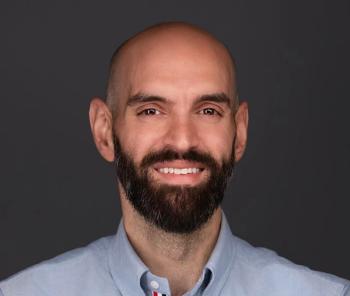
ECRI CEO Marcus Schabacker on medical errors: ‘We have become too complacent’
As ECRI releases its annual report on the top threats to patient safety, the organization’s leader urges hospital executives to put a higher priority on reducing preventable mistakes.
Marcus Schabacker says hospital and health system leaders must make a greater commitment to patient safety.
Schabacker is the president and CEO of ECRI, a nonprofit organization aiming to improve patient safety. ECRI has just released its annual report on
In an interview with Chief Healthcare Executive®, Schabacker, a board-certified anesthesiologist and intensive care specialist, says it's time for the industry to get more focused on reducing the number of preventable medical errors. Each year, 100,000 people die in hospitals and clinics due to medical errors, according to
“We have become too complacent with accepting that medical errors, preventable medical errors, are happening,” Schabacker says.
He compares the complacency in medical errors to the federal review that began after
“We have come to accept that it is OK that over 100,000 people die of preventable medical errors,” he says. “If 100,000 people would die in aviation, we would shut down any and every single flight until we fix it. We don't have that same commitment. We don't have that same commitment. And it starts at the leadership.”
If hospital leaders want to reduce the number of preventable errors, they have to demonstrate that it’s an organization-wide priority, he says.
“It starts with the absolute commitment, outspoken and believable commitment, of the senior leadership team,” Schabacker says. “If the CEO of a hospital system says, ‘I am striving for zero preventable harm,’ that is a statement.”
Hospital leaders need to create a culture focused on patient safety, but Schabacker says it does not need to be punitive. But hospitals should strive for “zero preventable harm” and a culture where harm is just not accepted. While preventing all errors may not be feasible, setting the highest standards makes a difference.
Leaders should focus on educating their workforce and identify elements that can make a difference in improving safety. Health systems also need to work with patients and caregivers, particularly in providing good instructions for care after patients are discharged from the hospital.
The healthcare industry has shown it can improve in areas such as wrong site surgery. “That’s a great example where everybody came together,” he says.
Schabacker also notes a key component in improving patient safety is closing disparities in health outcomes among underrepresented groups. He says inequities toward patients in minority groups remain prevalent in all of the 10 leading threats to patient safety in the ECRI report.
To improve health equity, and patient safety, leaders are going to have to engage the entire organization. Health systems can also take lessons from other hospitals and organizations who have had success in reducing preventable errors.
Schabacker acknowledged the staffing shortages that are affecting most health systems, and he said those shortages are certainly a factor affecting patient safety.
However, Schabacker says improving patient safety requires the commitment of top hospital leaders.
“To me, it is not acceptable that 100,000 people die of preventable medical errors,” Schabacker says. “We need to address that. But we can only do it with a purpose. And to continue to understand that we have significant disparities in this country. And again, this is not going to change by itself.”
Read more:




























































































